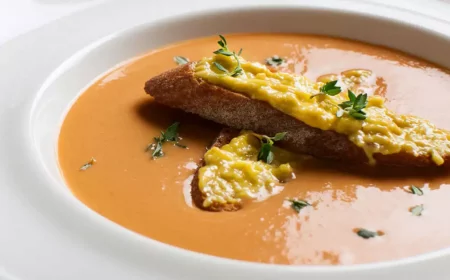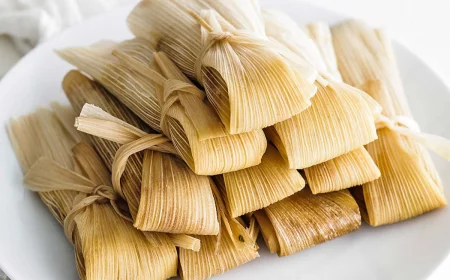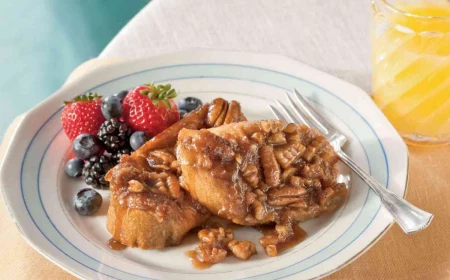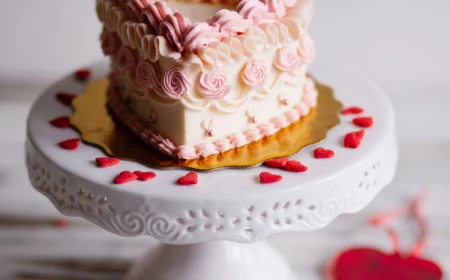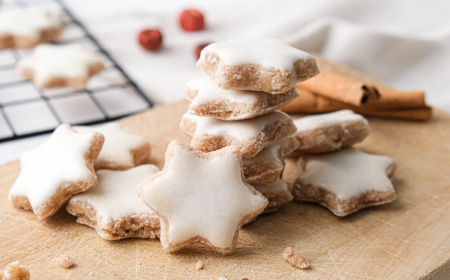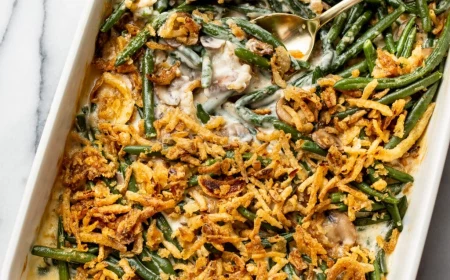The Orange Espresso Martini, Perfected: A Bartender’s Secrets for Nailing It at Home
I’ve spent countless nights behind the bar, and let me tell you, I’ve seen cocktail trends come and go. But some drinks just stick around for a reason. The Espresso Martini is one of them. When it’s good, it’s a masterpiece—rich, complex, and beautiful to look at. But when it’s bad? It’s a watery, sugary mess. Honestly, I’ve probably fixed more bad ones than I’ve made from scratch.
In this article
The secret isn’t some crazy, expensive ingredient. It’s all about respecting the basics and mastering the technique. The classic version is great, but a thoughtful twist can elevate it into something truly special. Adding orange is, without a doubt, one of the best upgrades. The bright citrus oils slice through the deep coffee flavor, making the whole thing feel more refined and aromatic.
But getting that balance right is a real craft. You can’t just dump in some orange juice and call it a day. It’s about understanding how every single element plays together. This guide is my brain dump of years of trial, error, and finding out what really works. We’re going way beyond a simple recipe list here. We’ll get into the nitty-gritty of creating that perfect foam, choosing the right booze, and the physical steps that make all the difference.
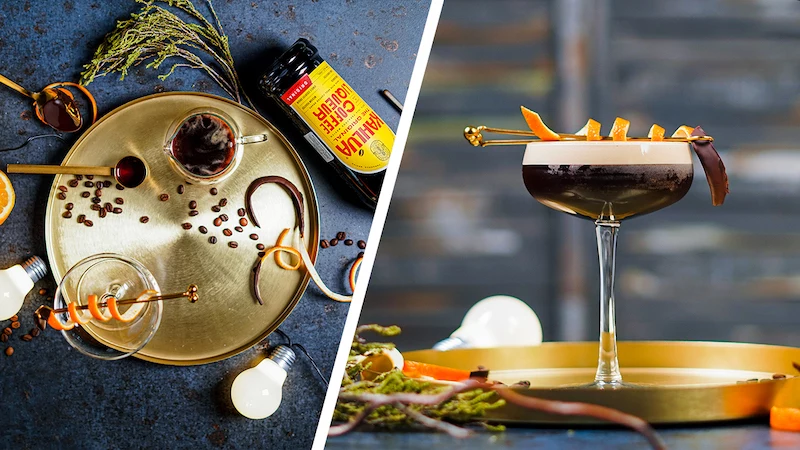
First Things First: Your Core Ingredients
A cocktail is only as strong as its weakest ingredient. For our Orange Espresso Martini, you have four key players: the espresso, the vodka, the coffee liqueur, and the orange. If you skimp on any one of these, the whole drink will suffer. Let’s break them down.
The Espresso: The Heart and Soul of the Drink
This is where most people go wrong, so let’s be crystal clear: you can’t make a top-tier Espresso Martini without real espresso. Drip coffee, cold brew, or instant coffee just won’t cut it. Why? They’re missing the magic ingredient for that iconic foam: crema.
Basically, crema is that reddish-brown foam that sits on top of a freshly pulled espresso shot. It’s created when hot water is forced through coffee grounds at super high pressure, emulsifying the coffee bean’s natural oils and trapping tiny CO2 bubbles. This oily, gassy emulsion is the secret to a rich, velvety cocktail foam. When you shake that hot espresso with ice, you’re flash-chilling and aerating that emulsion, which creates that dense, lasting layer of goodness.
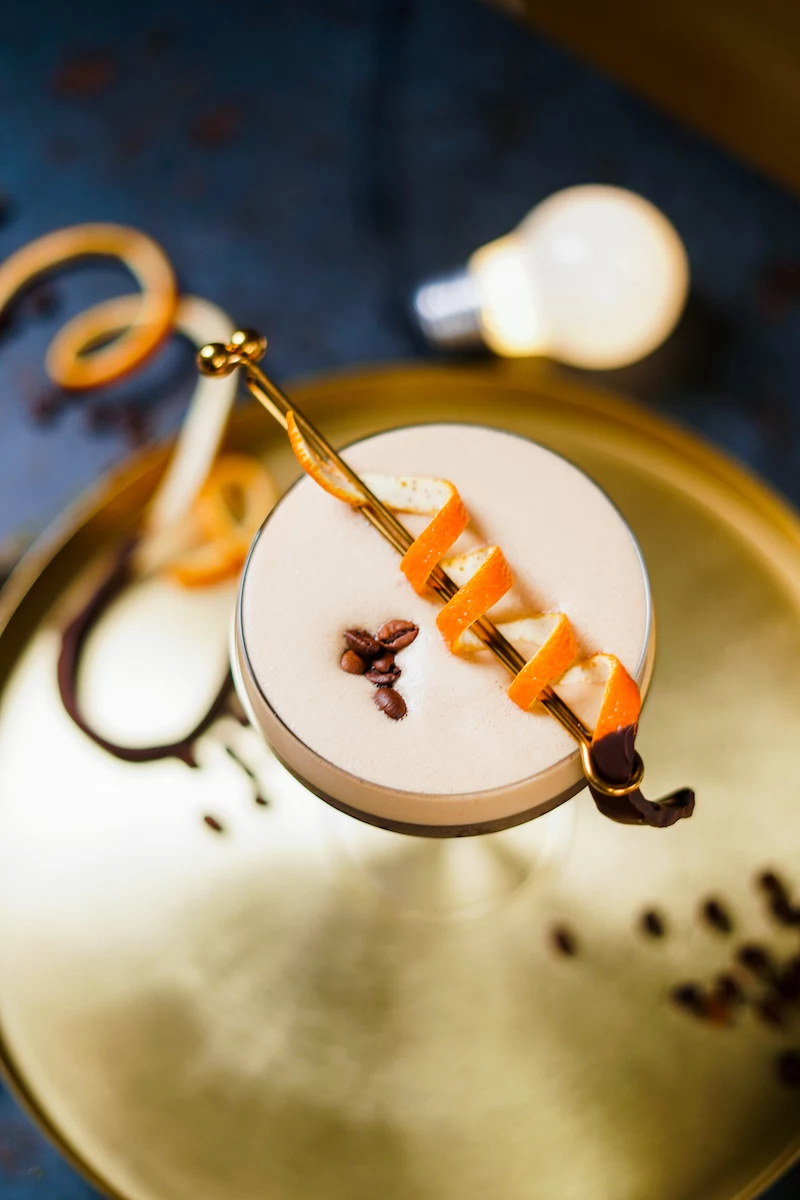
Oh yeah, and freshness is non-negotiable. Espresso starts breaking down the second it’s pulled. The crema vanishes and the flavor gets harsh. For pro-level results, you need to use espresso that was pulled less than a minute ago. That heat from the fresh shot is also key, as it helps create more aeration when it hits the ice.
Hold On—What If I Don’t Have a Fancy Espresso Machine?
Okay, the big elephant in the room. Most people don’t have a $500+ espresso machine sitting on their counter, and that’s totally fine! While a high-pressure machine is the gold standard, you have excellent options that get you 90% of the way there.
- Moka Pot: This is your best bet. A classic stovetop coffee maker that produces a strong, concentrated brew that’s very close to espresso. It makes a rich, flavorful base for your cocktail. You can grab one online or at most home goods stores for about $30.
- AeroPress: Another fantastic and affordable tool. By using a fine grind and a quick plunge, you can create a short, concentrated shot of coffee that works wonderfully. It might produce slightly less crema, but the flavor will be on point.
- Nespresso (or similar pod machine): This is a super convenient option. The coffee is brewed under pressure, so you do get a decent crema. It’s a perfectly acceptable shortcut for making a great drink at home.
The main takeaway? You need strong, concentrated coffee. Just promise me you won’t use yesterday’s drip coffee from the pot. Please.
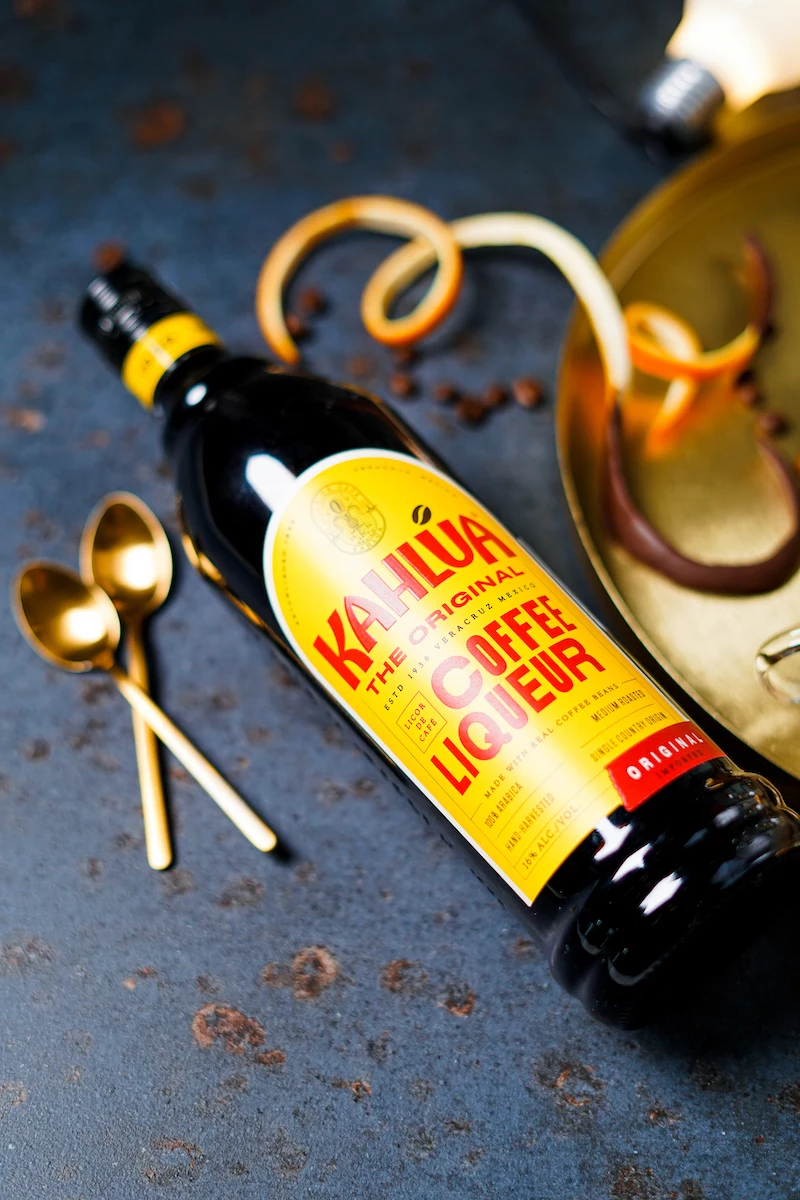
The Spirit: Clean Vodka Is Your Friend
Vodka is the traditional go-to because it’s a neutral backbone. It adds the kick without getting in the way of the coffee and orange. You don’t need to splurge on a $60 bottle here. You just want a solid, mid-range vodka that’s clean and smooth. Think brands like Tito’s or Ketel One, which usually run between $20 and $30. A quick tip: if a vodka burns or has a weird aftertaste when you sip it neat, it’ll show up in your cocktail.
The Coffee Liqueur: More Than Just Sweetness
This ingredient brings sweetness, body, and another layer of coffee flavor. Choosing the right one can make a huge difference.
Kahlúa is the one everyone knows, but to be frank, it’s very sweet and can easily overpower the drink. Bartenders often reach for other options to get better balance.
- Mr. Black Cold Brew Coffee Liqueur: This is the darling of the modern cocktail scene. It’s much less sweet and packs a serious, authentic coffee punch. It’s a bit of an investment at around $35-$45 a bottle, but the quality is night and day. Heads up: If you use this, you’ll probably want to add a tiny splash (about a teaspoon) of simple syrup to balance it out.
- Tia Maria: This one has a slightly different vibe, with notes of vanilla and Jamaican rum. It adds a lovely complexity that pairs beautifully with the orange. It sits somewhere in the middle on the sweetness scale.
- Galliano Ristretto: For those who want a bold, dark-roasted coffee flavor. It’s intense, so a little goes a long way.
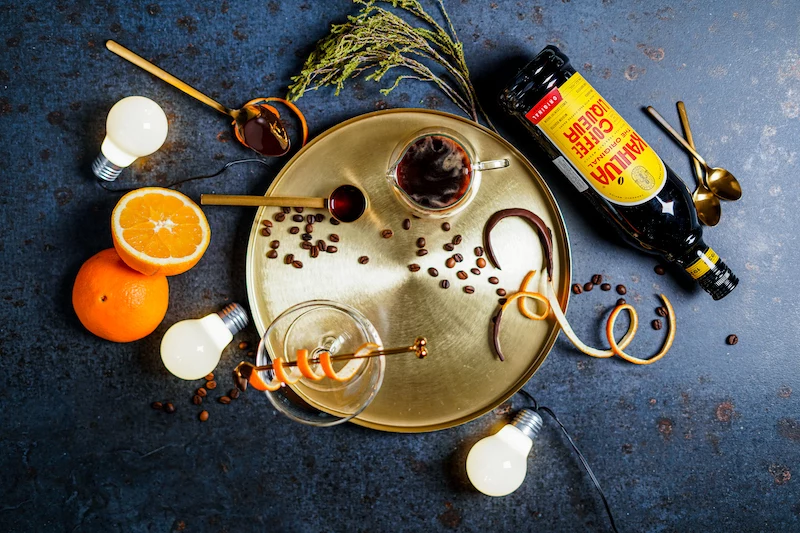
The Orange Element: Brightness and Aroma
This is where you can really put your signature on the drink. You’re aiming for a bright citrus note that complements the coffee, not a sugary orange blast. Stay away from artificial extracts!
The professional’s choice is a high-quality orange liqueur. It adds aroma, a touch of sweetness, and complexity all in one go. My favorites are Cointreau (clean, bright, and zesty) or Grand Marnier (a bit warmer and spicier, since it’s cognac-based). A bottle will set you back about $35-$40, but it’s a bar cart staple that you’ll use for tons of other drinks.
You can also add a couple of dashes of orange bitters. This is a fantastic way to add aromatic complexity without adding any sweetness.
The Pro Method: It’s All in the Technique
You can have the best ingredients in the world, but with bad technique, you’ll get a bad drink. This is what separates a homemade attempt from a world-class cocktail.
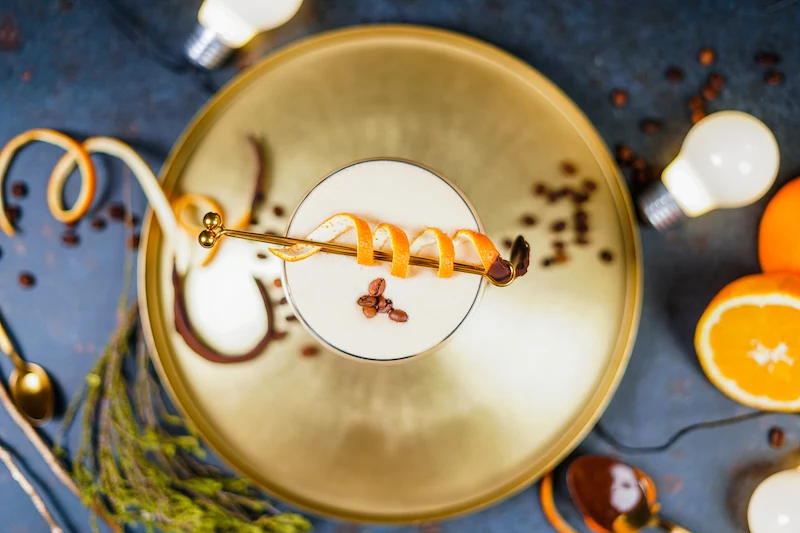
Step 1: Get Your Station Ready (Mise en Place)
Before you do anything else, chill your glass. A warm glass will kill your foam in seconds. Fill a coupe or martini glass with ice and a splash of water and let it sit while you build the drink. It should be frosty cold when you’re ready to pour.
Step 2: Build the Drink in Your Shaker
In a Boston shaker, add your ingredients. I like to do liqueurs first, then the vodka, and finally, pour the hot espresso directly into the shaker. Now, fill the shaker about two-thirds full with fresh, hard ice cubes. Not the wet, melty stuff at the bottom of the freezer bin!
Step 3: The Shake (This is the Magic Moment)
Seal your shaker tins tight and get ready for a workout. This is not a gentle rock back and forth—you need a hard, fast, violent shake. Hold it with both hands and shake it like you mean it for a full 12 to 15 seconds. The outside of the shaker should get painfully cold and covered in frost. That’s how you know it’s ready.
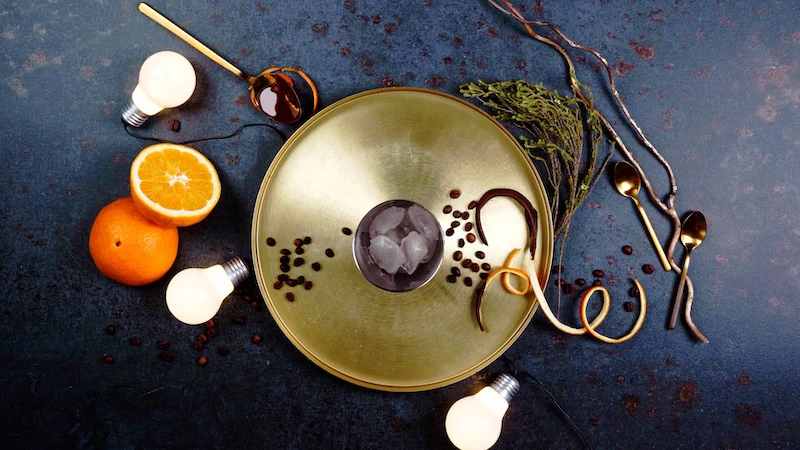
Step 4: The Double Strain (The Pro Move)
This part is absolutely crucial for that silky-smooth texture. Pop open your shaker. Place a Hawthorne strainer (the one with the spring) over the top. Then, hold a fine-mesh tea strainer over your chilled, empty glass. Pour the drink from the shaker through both strainers. This catches all the tiny ice shards, ensuring a perfectly velvety cocktail. It’s a small step that makes a massive difference.
Step 5: Garnish with a Flourish
Take a fresh piece of orange peel. Hold it peel-side down over the drink and give it a sharp squeeze. You’ll see a fine mist of oil spray over the foam—this adds an incredible aroma. Then, gently place three coffee beans in the center of the foam. It’s an old Italian tradition said to represent health, wealth, and happiness.
The Go-To Orange Espresso Martini Recipe
Here’s a balanced, reliable recipe to get you started. Once you get your station prepped, making the actual drink is quick—we’re talking under 5 minutes from start to finish.
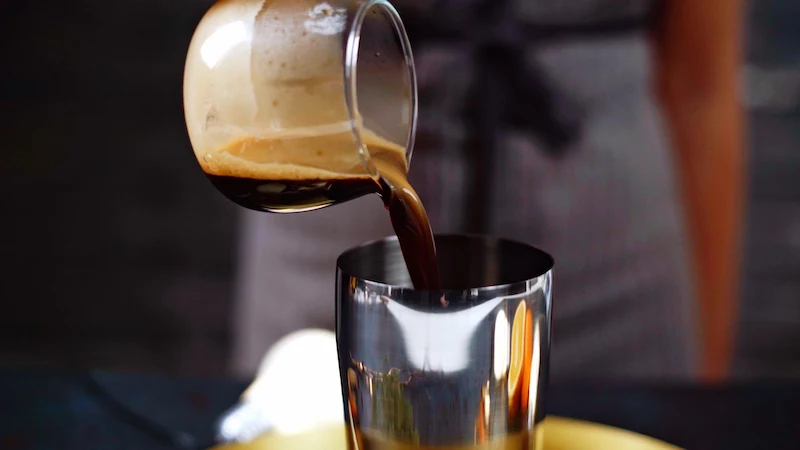
Glass: Chilled Coupe Glass
Ingredients:
- 1.5 oz (45 ml) Quality Vodka
- 1 oz (30 ml) Fresh, Hot Espresso (or strong Moka Pot brew)
- 0.66 oz (20 ml) Coffee Liqueur
- 0.33 oz (10 ml) Orange Liqueur
- 2 dashes Orange Bitters (optional but highly recommended)
Method:
- Chill your coupe glass with ice.
- Combine all ingredients in a shaker tin.
- Fill the shaker with fresh ice, seal it, and shake HARD for 12-15 seconds.
- Empty the ice from your chilled glass.
- Double strain the cocktail into the glass.
- Garnish with an expressed orange peel and three coffee beans.
Troubleshooting Common Problems
Even the pros mess up sometimes. If your drink isn’t coming out right, one of these is probably the culprit.
- Problem: My foam is weak or disappears fast.
This is usually one of three things. 1) Your espresso wasn’t fresh. 2) You didn’t shake hard enough. Really put your back into it! 3) Your glass was warm, which will kill the foam on contact. Always use a deeply chilled glass. - Problem: My drink tastes watery.
You probably used wet, slushy ice or let the drink sit in the shaker too long after shaking. Use hard, fresh ice and strain immediately. - Problem: It’s too sweet or too bitter.
If it’s too sweet, your coffee liqueur is likely the cause. Try reducing it a bit or switching to a drier brand. If it’s too bitter, your coffee was probably over-extracted. Make sure you’re pulling a balanced, not sour, shot.
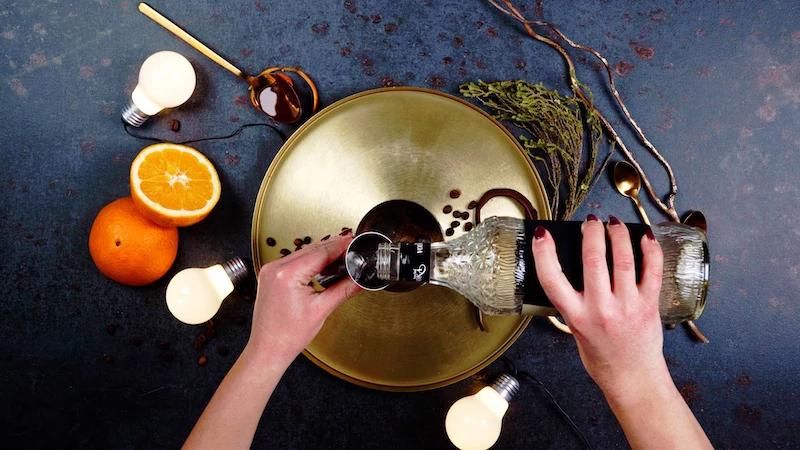
Getting Geared Up: What You’ll Actually Need
If you’re starting from scratch, you might be wondering about the initial cost. Good news is, it’s an investment that pays off. You’ll need a Boston shaker (about $25), a good strainer set with both a Hawthorne and a fine-mesh strainer ($15), and a couple of coupe glasses ($20). For the booze, you’re looking at about $25 for a solid vodka, and maybe $35-$40 each for the coffee and orange liqueurs. So, all in, you can get a professional-quality home setup for this drink for around $160. And remember, those bottles will make dozens of cocktails.
A Quick, Friendly Warning
Alright, a quick but important heads-up. This drink contains a powerful stimulant (caffeine) and a depressant (alcohol). That combo can be tricky because the caffeine can mask how you’re feeling, which might lead you to drink more than you realize. It’s a fantastic cocktail, but it demands respect. Always enjoy it mindfully and maybe have a glass of water on the side. Cheers!
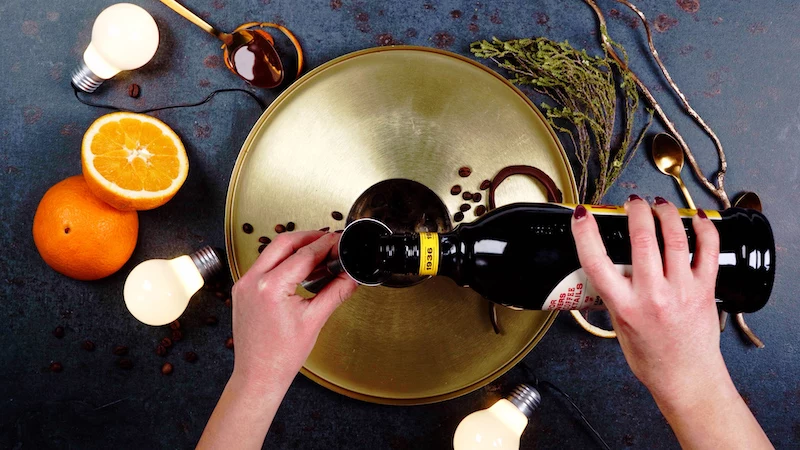
Inspirational Gallery
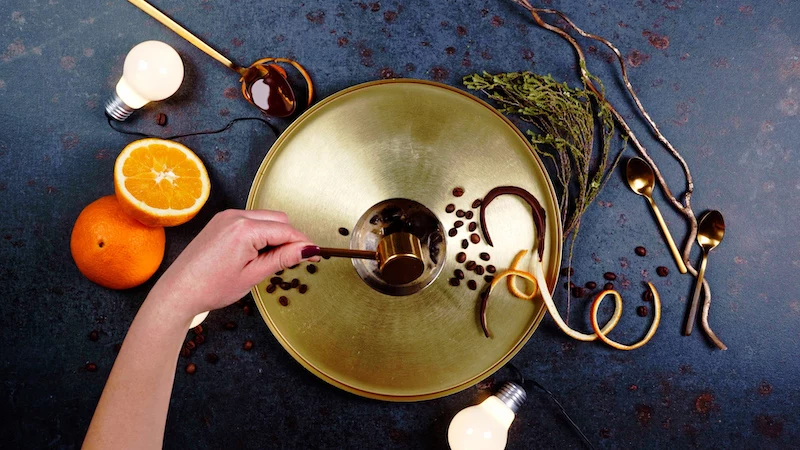
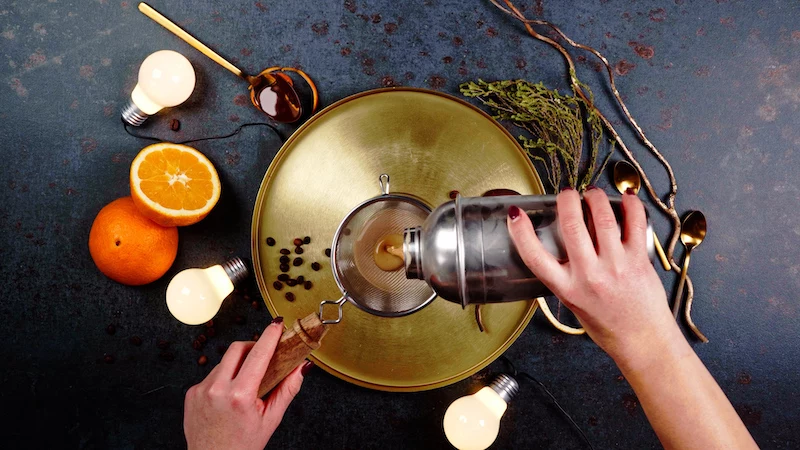
Kahlúa: The classic choice, bringing a rich sweetness with notes of rum, vanilla, and caramel. It creates a dessert-like, approachable cocktail.
Mr. Black Cold Brew Coffee Liqueur: For the coffee purist. It’s robust, far less sweet, and delivers a powerful, authentic cold brew kick. A top-shelf pick from Australia that makes the coffee the undeniable star.
The choice defines your drink’s final character: sweet and classic or bold and modern.
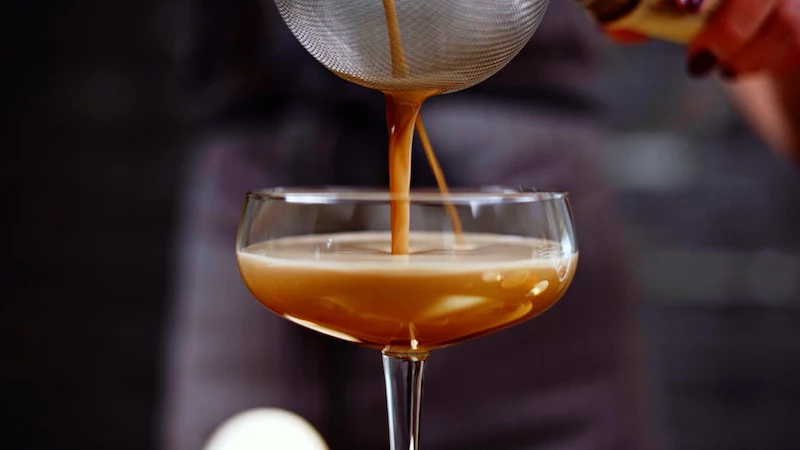
The legendary bartender Dick Bradsell created the first Espresso Martini in London in the 1980s. His supposed story? A famous model walked up to the bar and asked for a drink that would ‘wake me up, and then f**k me up.’
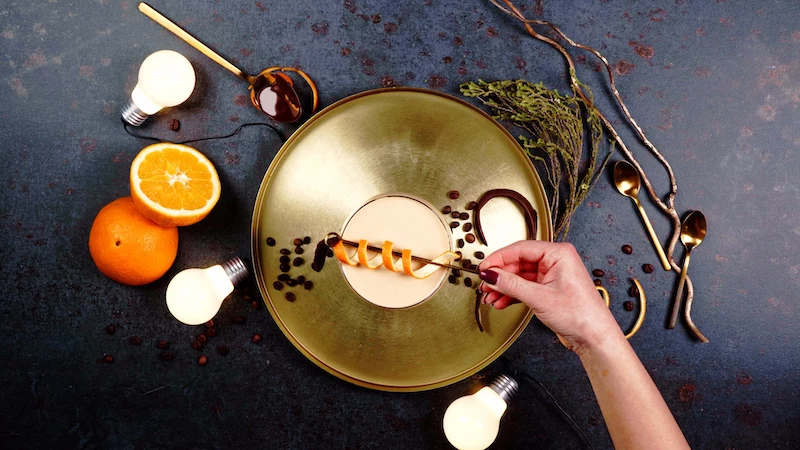
While the three coffee beans are iconic (representing health, wealth, and happiness), an Orange Espresso Martini begs for a citrus-forward garnish. Try these:
- A long, thin orange twist, expressed over the foam to release its oils.
- A sprinkle of high-quality dark chocolate shavings (Valrhona works wonders).
- A dehydrated orange wheel floating atop the crema for a stunning visual.
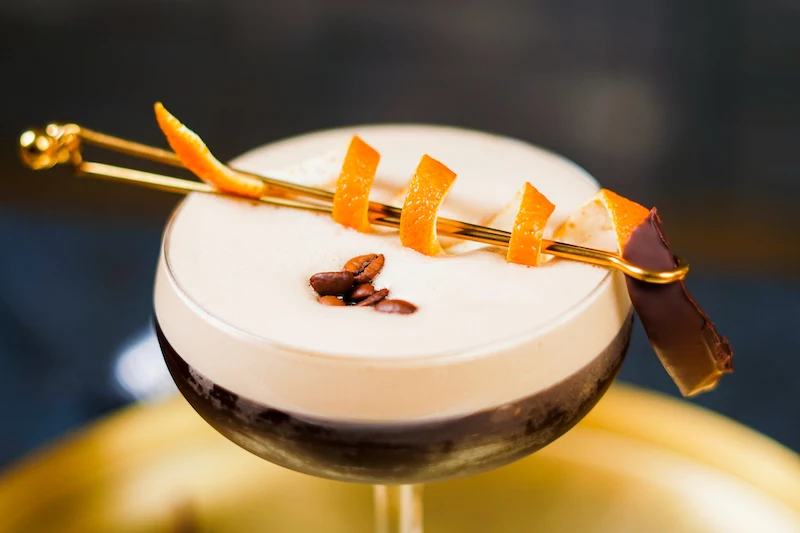
What’s the best alternative if I don’t have an espresso machine?
While a machine is ideal for its crema, a stovetop Moka pot is your best bet. It uses pressure to force water through the grounds, extracting more oils and flavor compounds than drip coffee. Let the coffee cool for just a minute before shaking to avoid melting the ice too quickly and creating a watery drink.
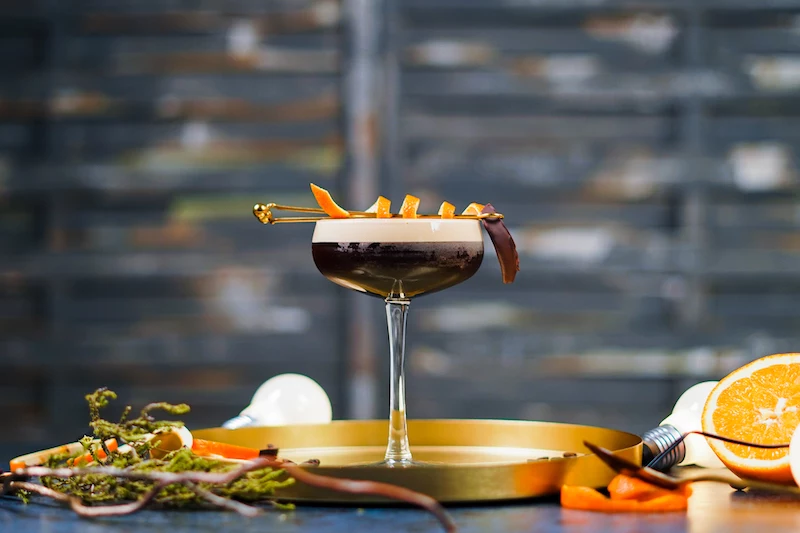
The secret to that perfect, velvety foam isn’t just the coffee: It’s the temperature. A truly great Espresso Martini is shockingly cold. For a professional result, put your cocktail shaker AND your coupe or martini glasses in the freezer for at least 15 minutes before you start. Shaking with ice in a pre-chilled tin creates a finer foam and ensures the first sip is perfectly crisp.
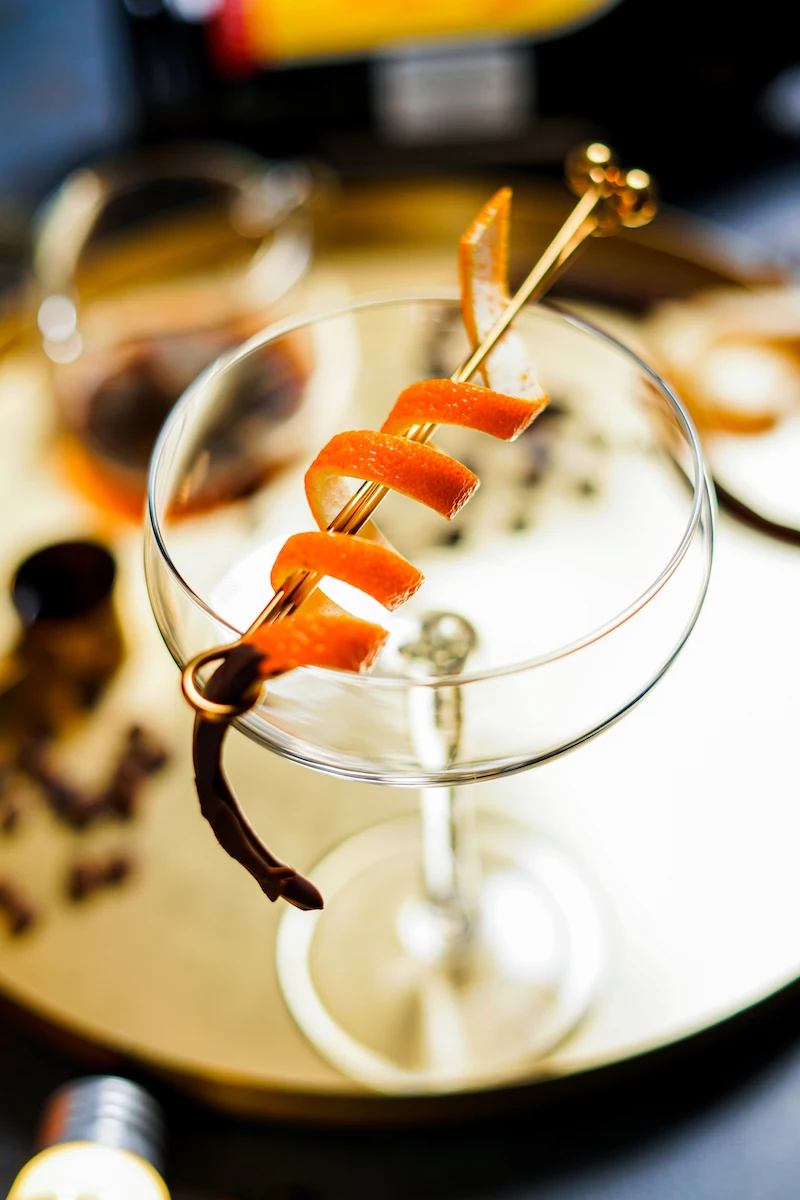
- A vibrant, zesty aroma that hits you before the first sip.
- A beautiful, professional-looking finish that elevates the drink.
The trick? It’s all in the peel. Before dropping your garnish in, hold a fresh orange peel (pith-side down) over the drink and give it a sharp squeeze. This ‘expresses’ the citrus oils directly onto the foam, transforming the aromatics.
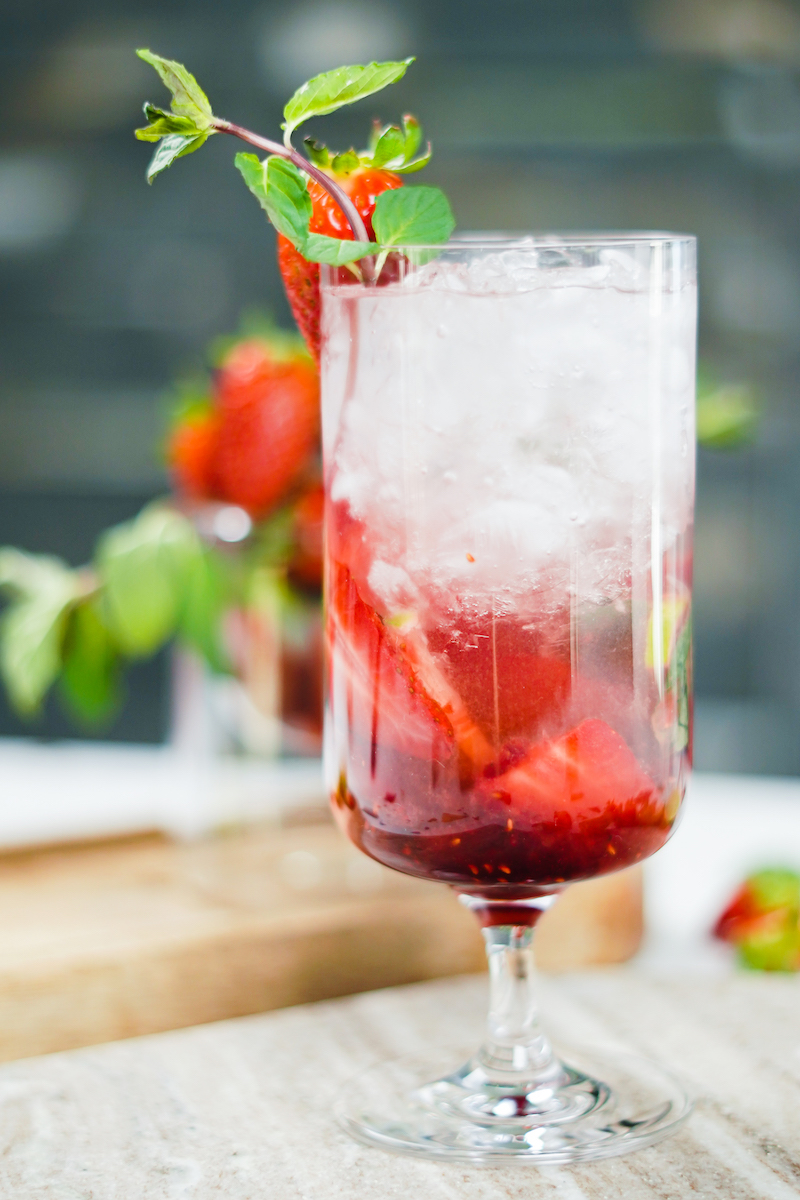
To truly double down on the citrus notes, consider adding a splash of orange liqueur. It provides a more complex, rounded flavor than just a twist of peel.
- Cointreau: Adds a clean, bright, and zesty orange profile that keeps the drink feeling crisp.
- Grand Marnier: Based on cognac, it brings a richer, deeper flavor with hints of vanilla and oak that beautifully complements the dark coffee notes.
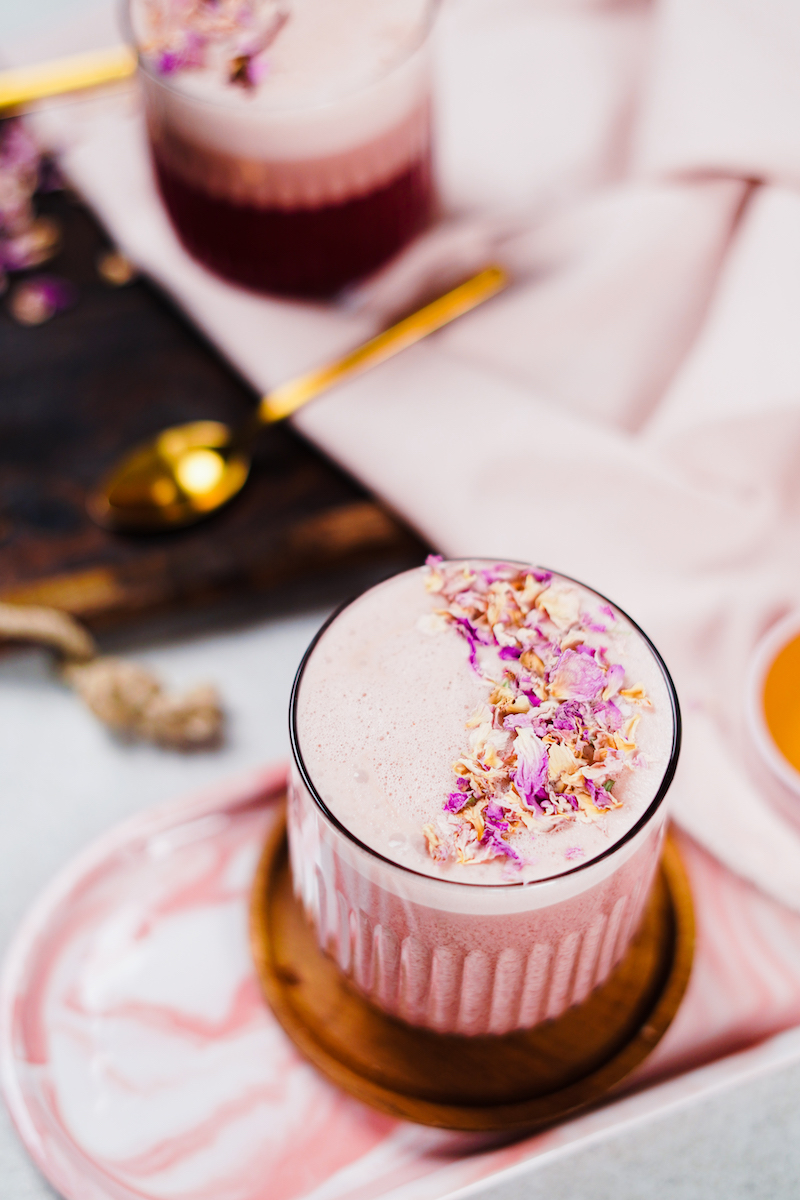
A vigorous 12-15 second shake does more than just chill; it adds approximately 25% water content to your cocktail through dilution.
This isn’t a bad thing! Proper dilution is essential. It’s what melds the sharp vodka, sweet liqueur, and bitter coffee into a single, harmonious flavor profile. Too little shaking results in a harsh, unbalanced drink, while too much leads to a weak, watery one. That 15-second mark is the sweet spot.
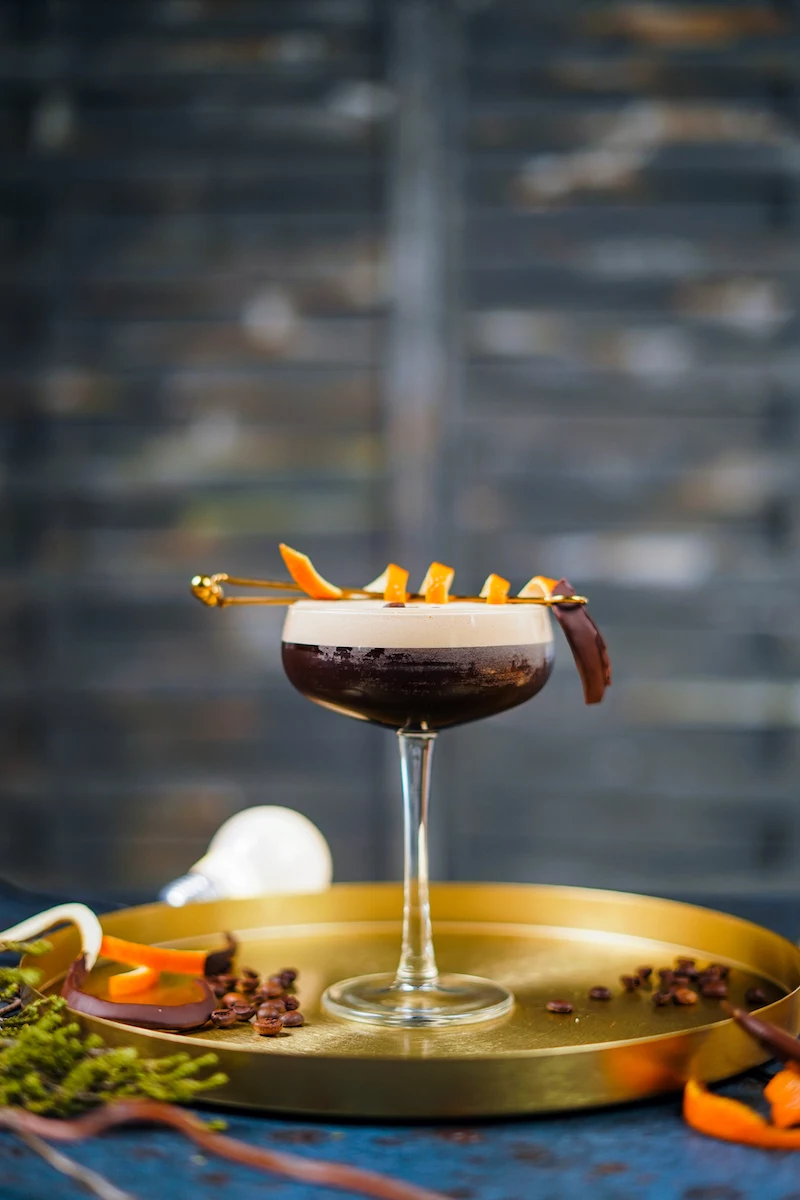
The choice of vodka matters. While the article focuses on the coffee, the spirit is the backbone. For a classic, clean taste that lets the orange and espresso shine, opt for a neutral grain vodka like Ketel One or a high-quality French wheat vodka like Grey Goose. If you prefer a creamier texture, a potato-based vodka such as Chopin can add a surprisingly silky mouthfeel to the final cocktail.
Want to take your orange twist to the next level? Infuse your vodka. There’s no need for expensive, artificially flavored spirits. Simply add the peels of one organic orange (using a vegetable peeler to avoid the bitter white pith) to a 750ml bottle of vodka. Let it sit in a cool, dark place for 4-7 days, tasting it daily until it reaches your desired intensity. Strain out the peels, and you have your own custom-infused spirit.

